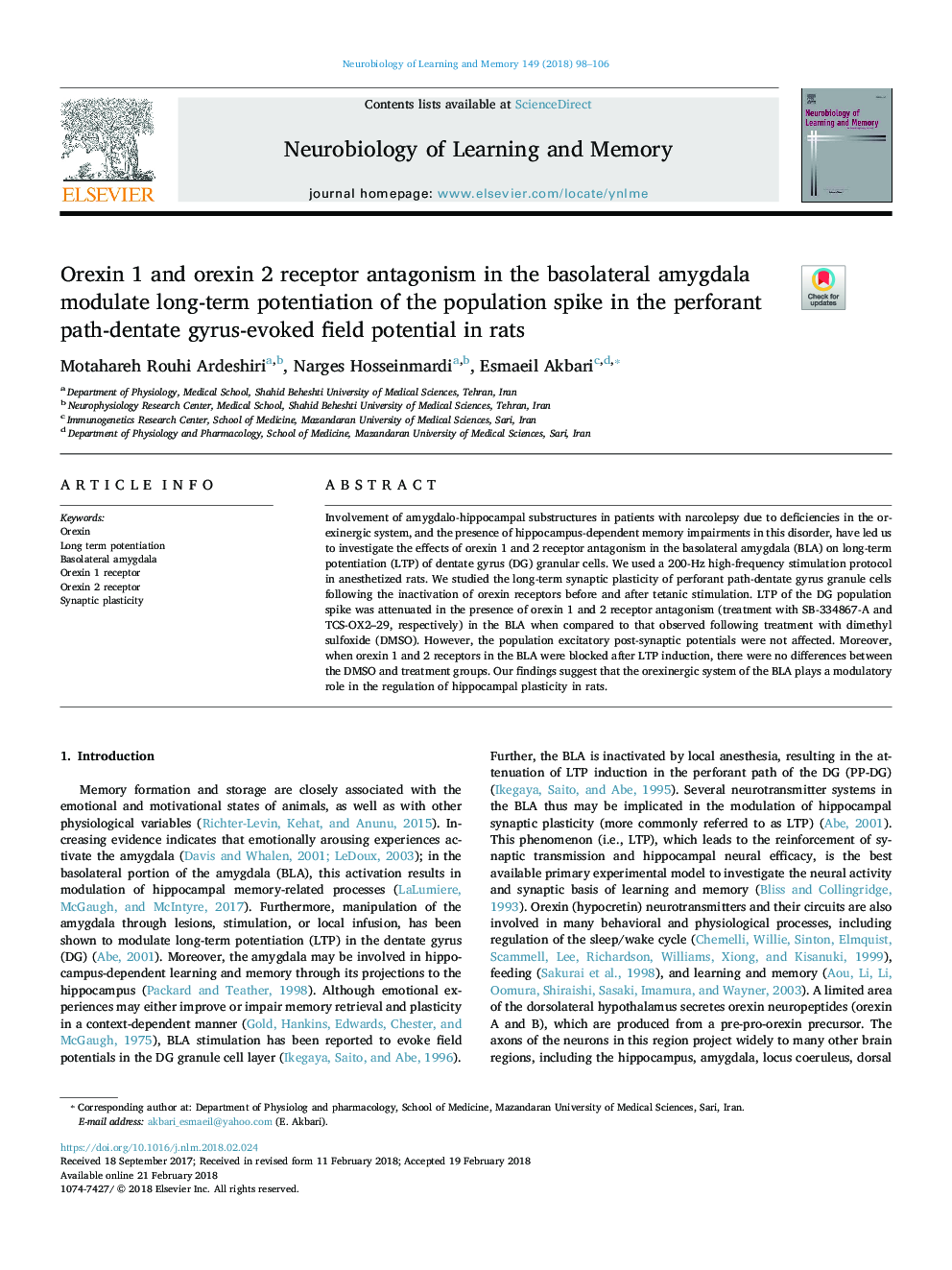| Article ID | Journal | Published Year | Pages | File Type |
|---|---|---|---|---|
| 7298858 | Neurobiology of Learning and Memory | 2018 | 9 Pages |
Abstract
Involvement of amygdalo-hippocampal substructures in patients with narcolepsy due to deficiencies in the orexinergic system, and the presence of hippocampus-dependent memory impairments in this disorder, have led us to investigate the effects of orexin 1 and 2 receptor antagonism in the basolateral amygdala (BLA) on long-term potentiation (LTP) of dentate gyrus (DG) granular cells. We used a 200-Hz high-frequency stimulation protocol in anesthetized rats. We studied the long-term synaptic plasticity of perforant path-dentate gyrus granule cells following the inactivation of orexin receptors before and after tetanic stimulation. LTP of the DG population spike was attenuated in the presence of orexin 1 and 2 receptor antagonism (treatment with SB-334867-A and TCS-OX2-29, respectively) in the BLA when compared to that observed following treatment with dimethyl sulfoxide (DMSO). However, the population excitatory post-synaptic potentials were not affected. Moreover, when orexin 1 and 2 receptors in the BLA were blocked after LTP induction, there were no differences between the DMSO and treatment groups. Our findings suggest that the orexinergic system of the BLA plays a modulatory role in the regulation of hippocampal plasticity in rats.
Keywords
Related Topics
Life Sciences
Neuroscience
Behavioral Neuroscience
Authors
Motahareh Rouhi Ardeshiri, Narges Hosseinmardi, Esmaeil Akbari,
